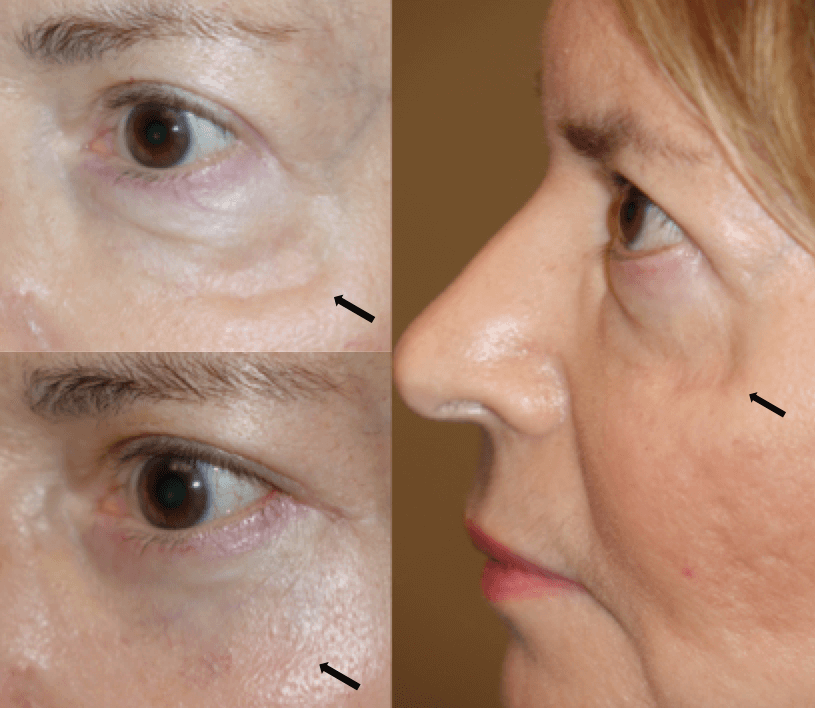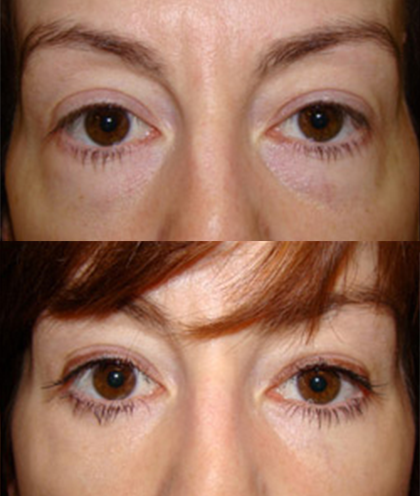Fat Grafting for Hollow, Sunken Eyes and Revisional Blepharoplasty
One of the most significant advances in cosmetic eyelid surgery, or any cosmetic facial surgery over the years, has been the refinement of the fat grafting technique. One example would be augmenting blepharoplasty (or any cosmetic eyelid surgery) with some degree of fat grafting.
Various types of facial fillers (Collagen, Restylane, Juvederm, etc) have been used with great success over the last decade to treat wrinkles. We now know that in addition to treating wrinkles, these materials can be used to add to or augment facial volume. As our understanding of facial aging has become clearer, we have come to understand that loss of facial volume (fat, muscle and bone) is the primary factor in visual aging. I call this process facial deflation. The best analogy I can give is that in youth our face resembles a grape and as we age it becomes more like a raisin. This change leads to hollowing, thinning, sagging, wrinkling and a generalized skeletonized look.
Fat Grafting can be a better solution to reducing wrinkles than fillers.
Your best option for sunken eyes or previously overdone cosmetic surgery is to fill the are that is lacking in volume, or “hollow”. The fillers mentioned above are just some of the products available on the market today. The problem is that they are temporary and can be pricey if continued use is indicated (approximately $600 – $1000/every 4-6 months).
Fat grafting may be a better option. The technique involves harvesting (taking) fat from donor sites in our body which have excess (stomach, inner thighs, etc.) and transferring the fat to areas on the face which are hollow (deflated), such as lower eyelids. The added volume leads to a more youthful appearance.
The fears people have about fat grafting is that the fat will not take and that “lumps and bumps” or contour irregularities may develop.
The success of fat grafting (survival of fat) depends on many factors including harvesting technique, how fat is prepared for injection (grafting), area of face to be injected (Example: fat grafted to lower eyelids tends to take better than other areas of the face as there is little movement in that area), condition of tissue to which fat is injected, previous trauma, previous surgery, and injecting technique. A good evaluation is critical in determining these factors and how they will affect survival of the fat.
In the hands of an experienced surgeon, irregularities at the fat injection sites are less common today then previously. Today, fat grafting techniques are such that this complication should be rare. If it does occur, it can be treated with medications or, rarely, surgery.
I have found fat grafting to be an invaluable tool in my practice which has augmented my surgical results tremendously. This is especially true in revisional (redo) blepharoplasty (cosmetic eyelid surgery) where eyes look hollow. In addition, fat grafting has been an invaluable tool in primary (first time) blepharoplasty where excessive removal of fat can lead to hollow and sunken eyes.

Fat Grafting
Fat grafting is an excellent technique for the treatment of facial hollows, eyelid hollows, the sunken look, overdone previous surgery, and generalized facial aging to restore a youthful appearance.


